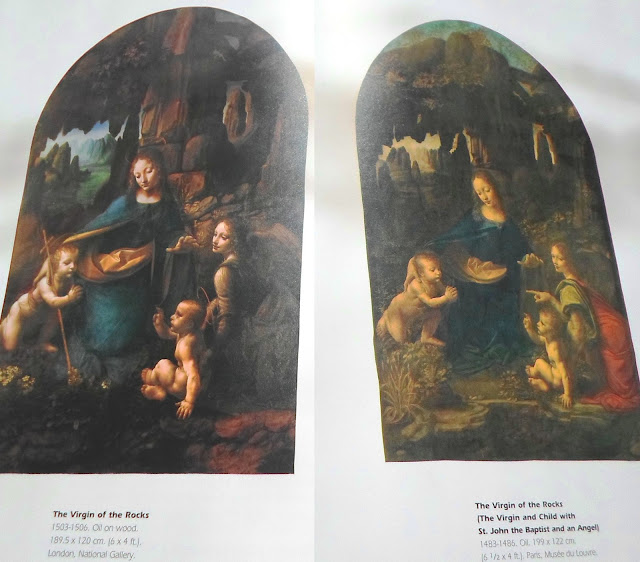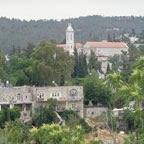Ordinary Time: May 29th
Wednesday of the Eighth Week of Ordinary Time
Night Office
First Reading I Corintians
15:35-58
Responsory 1 Cor 15:21-22; 2:9
Just as death came
through one man, so the resurrection of
the dead came through one man. + For
as in Adam all die, so also in Christ shall all be brought to life.
V. Eye has not seen, nor ear heard, nor human heart conceived what God
has prepared for those who love him. + For
as in ...
Alternative Reading
From The Dialogue of Catherine of Siena
It is the desire of the blessed ones to have once again the gift of their
bodies. But it is not a troubled desire, because although they do not have them
now they are happy in the certainty that their desire will be fulfilled. They
are not troubled, for they experience no pain or lack of happiness in not having
them. Do not think either that the body's happiness after the resurrection will
add anything to the soul's happiness. If this were the case, it would follow that
the soul's happiness would be imperfect until the return of the body. But this
cannot be, for these souls lack no perfection. It is not the body that brings happiness
to the soul. The soul, though, will give happiness to the body: her own fullness
will overflow when on the final day of judgment she puts on once more the garment
of her own flesh, which she had left behind.
Just as the soul was made immortal and firm in me, so in this reunion
the body will become immortal, its heaviness cast off and made fine and light. The
glorified body could pass through a wall, and neither fire nor water could hurt
it. But know that this is not due to its own power but to the soul's - which is
really my own power given her by grace through the unspeakable love with which
I created her in my image and likeness.
The good of these souls is beyond what your mind's eye can see or your ear
hear or your tongue describe or your heart imagine. What joy they have in seeing
me who am all good! What joy they will yet have when their bodies are glorified!
But while they do not have this latter good until the general judgment, they do
not suffer. They lack no happiness, for the soul is filled, and in this fullness
the body will share.
I have told you of the good the glorified body will have in the glorified
humanity of my only-begotten Son, and this is the guarantee of your own resurrection.
What joy there is in his wounds, forever fresh, the scars remaining in his body
and continually crying out for mercy to me the high eternal Father, for you!
You will all be made like him in joy and gladness; eye for eye, hand for hand, your
whole bodies will be made like the body of the Word my Son. You will live in him
as you live in me, for he is one with me. But your bodily eyes, as I have told you,
will delight in the glorified humanity of the Word my only-begotten Son. Why? Because
those who finish their lives delighting in my love will keep that delight forever.
Not that they can do any further good now, but they rejoice in the good that they
have brought with them. In other words, they cannot do anything deserving of merit,
for it is only in this life, by the choice of free will, that one can either merit
or sin.
These souls wait for divine judgment with gladness, not fear.
And the face of
my Son will appear to them neither terrifying nor hateful, because they have finished
their lives in charity, delighting in me and filled with good will toward their
neighbours. The different appearances of his face when he comes in my majesty for
judgment will not be in him but in those who are to be judged by him. To the
dammed he will appear with just hatred, but to the saved, with mercy and love.
+ + + + + + + + + +
Google Goodread.
Comment from Steve: She was 23 when she dictated this, in a state of ecstasy, to the other nuns, having achieved a depth of understanding of the divine that hardly a nonagenarian can claim. She died 10 years later, at the same age at which Our Lord was crucified. St. Caterina, probably starving and living off of only the Eucharist as she was known to do, is able, in this remarkably, remarkably dense work, to grasp concepts that few of us could have drawn out with full stomachs. She, or, I should say, the Lord dictating through her, is not only a first-rate philosopher but a first-rate poet. Dr. Johnson says somewhere that the surest sign of genius is its use and understanding of metaphors; by this standard, St. Caterina is truly honored as a Doctor of the Church.
I was expecting, in read a work of mysticism, to encounter new ideas, ones I hadn't considered before, in other words, revelation. After all, this is purportedly the Lord speaking to her, and through her to us. And while this is the case, instead, St. Caterina spells out the logical consequences of what has already been revealed long before even her time. Hence there is complete consistency here, despite poetic novelties, and these theological truths can be glimpsed by human reason examining revealed truth. Do not be afraid: this is not nearly as weird a book as one dictated by a woman in ecstasy might sound.



















